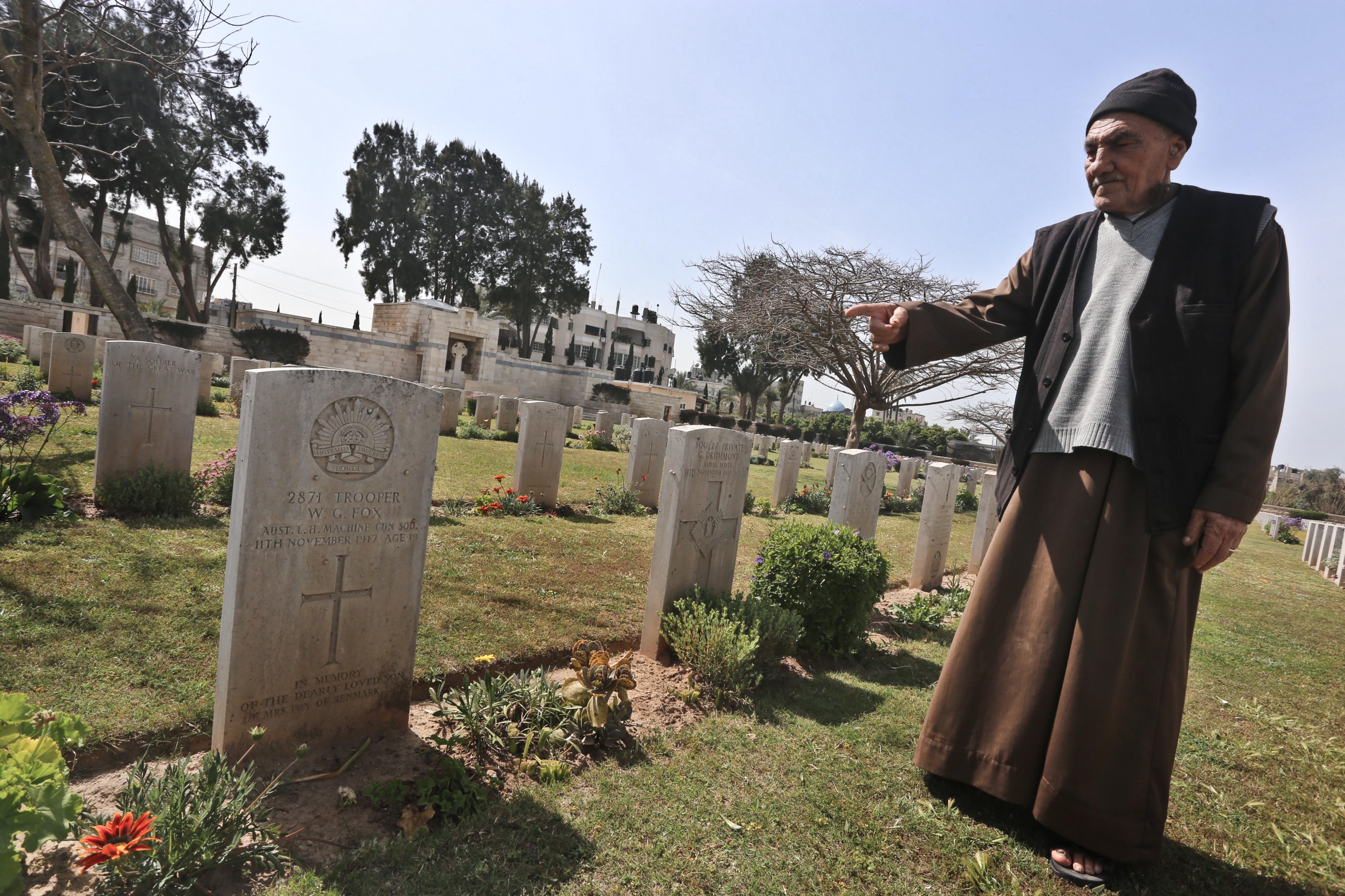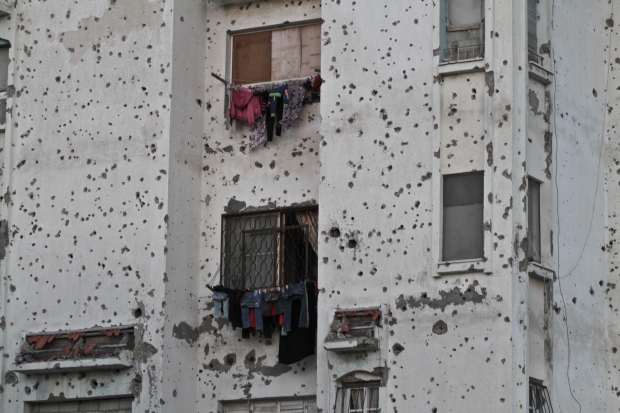Gaza's global place names reflect history of war and peacekeeping

Armies have been fighting over the Gaza Strip for millennia, long before the spate of devastating assaults inflicted by Israel in recent years. Alexander the Great, the Romans, the early Muslim armies and European crusaders all conquered the territory at one point or another. Napoleon landed troops here in 1799, and Britain's expeditionary force clashed with Ottoman troops on this soil in 1917.
That rich history is reflected in the many foreign names given to areas of the strip.
In Gaza, several Palestinian camps and villages are named after other countries, such as the Swedish Village, the Canada Camp and Saudi Neighborhood, in recognition of decades of international peacekeeping missions that have passed through the strip.
Abu Rashad Abu Shammalah is the Mukhtar (leader) of the Austrian camp, which was established in western Khan Younis in 1997 by the Austrian government.
Families named the area “Austria” in honour of the Austrian government, which supports families with limited income in the form of subsidised housing and shelter.
“We lived here for a year and then the Intifada in 2000 started, and the Austrian camp became a borderline zone close to Israeli military posts,” says Abu Shammalah. “About 10 percent of the population fled their homes because of constant shooting.”
The camp is now inhabited by over 5,000 people from various parts of the Gaza Strip.
But after the Israeli settlers withdrew from Gaza in 2005, the Mukhtar says life returned to relative normality, “but we continued to honour Austria for its help in providing subsidies.”
Brazil Camp
Khalil al-Jamal is originally from Yebna, a small town that used to be between the town of Lod and Jaffa on the Mediterranean coastal plain. Al-Jamal was seven years old when he was expelled with his family from Yebna by Zionist militias in 1948.
When the Palestinian residents of Yebna were forced to flee they headed south to Rafah in the Gaza Strip, where they named their refugee camp as another Yebna. However in 1974, the Israeli occupation decided to remove part of the refugee camp in order to build a strategic large highway.
Jamal, 73, said there was no other option but to head to an area Israel had named Dekel B.
“We refused to take the name that the Israeli occupation imposed on us, and because Brazilian UN troops had their camp nearby, we started to call the camp Brazil,” Jamal said.
“We did not want to take Hebrew names from the occupying Israeli military. It was more honourable to name our camp after peace-keeping Brazilian troops,” says Jamal, who is now one of the senior men in the Brazil camp.
The Brazil camp used to consist of 10,000 inhabitants, but because of its location on the border with Egypt, it has witnessed several wars. 75 percent of residential homes have been destroyed by Israeli bulldozers since the second Intifada.
The area is famous for the tunnels that most of Gaza’s population depended on as a lifeline for survival, in light of Israel’s continuous siege and blockade on Gaza.
Brazil is still a distinguished area, with roads designed to be wide, unlike the narrow roads of Yebna in Rafah where Al-Jamal lived in the past. Now, Al-Jamal lives here with his wife, four children, and 24 grandchildren.
“Brazil has become a home for people from all over Rafah. Everyone who lost their ancestral homes came to settle here instead,” he said.
Yebna is now inhabited by Mizrahi Jews, but Jamal says the time will come when he will return to the land he was forced to flee when he was a child.
“[There is bigger] hope to return to our original homes in the real Yebna in Israel,” he stated. “Brazil is only temporary, but Yebna is sufficient to accommodate all its people again.”
Commonwealth graves in Gaza
In the Deir al-Balah area in the middle of the strip, the Gaza War Cemetery is the final resting place for over 3,000 Commonwealth soldiers that served in the First World War.
The cemetery, administrated by the Commonwealth War Graves Commission, is located in a relatively peaceful area shaded by jacaranda trees which show no signs of the fierce battles that took place here in 1917.
Local people come to this peaceful, historical space to breathe some fresh air away from the dust of recent wars. Many students arrive on school buses to the Commonwealth cemetery to learn about the important historical site of battles for Gaza that took place in March-April 1917 during the First World War.
The cemetery has 3,217 Commonwealth graves from the First World War, 781 of them which are unidentified. Inscribed on 800 of the tombstones are the words: "Soldier of the Great War, known unto God." There are also 210 graves from the Second World War, and 234 multinational war graves for Australians, New Zealanders, Polish and Indian troops.
This Commonwealth cemetery has largely been forgotten by international eyes and minds - but in here in Gaza, Ibrahim Jeradeh has dedicated himself to the job he inherited, of tending and tidying all the burial places. Now his son Essam is taking over and together with a few others, are employed by the Commonwealth War Graves Commission through the British Consulate in Jerusalem.
Jeradeh, the 78 year old caretaker, explains how he began his job as the cemetery's head gardener after helping his father, before he died. Now, his son Essam is primed to care for these graves next. Jeradeh says that the family, who live in a tiny house close to the cemetery, will maintain the tradition of tending the graveyard for the dead.
“Whatever you do, make sure you remain sincere in your job,” says Jeradeh, while his hands gently water and tidy the flowers and grass around the graves.
Jeradeh was awarded an MBE in "grateful recognition of outstanding contribution to the Commonwealth War Graves Commission.” The MBE's accompanying certificate was signed by the Duke of Kent.
The cemetery represents the British and other international soldiers who died in the Battle of Gaza, in the final part of the First World War. Their bodies were transferred from the battlefield to be reburied, side by side, in the memorial cemetery.
The cemetery was struck by Israeli missiles on two occasions between 2008 and 2010. In one incident Israel paid £90,000 in compensation to the CGWC for destruction and damage caused to the sacred burial site. 350 headstones were damaged by Israeli shells in Operation Cast Lead, on Christmas Day in 2008 and again on New Year’s Day in 2009.
Over the years, Jeradeh has received many British families who came to visit the graves of their relatives, in Palestine. However, as Gaza remains under Israeli siege, many families are unable to obtain permits from Israeli authorities to enter Gaza.
Whether the soldiers were Christian, Jewish or Muslim, Jeradeh gives them all equal respect and care.
“I take care of this place-it is part of my life,” Jeradeh said. “I started at the age of 18 and will ensure that my grandchildren care for it too.”
“The cemetery is a place of comfort for me, it has become part of the family soul, and will remain so.”
New MEE newsletter: Jerusalem Dispatch
Sign up to get the latest insights and analysis on Israel-Palestine, alongside Turkey Unpacked and other MEE newsletters
Middle East Eye delivers independent and unrivalled coverage and analysis of the Middle East, North Africa and beyond. To learn more about republishing this content and the associated fees, please fill out this form. More about MEE can be found here.







